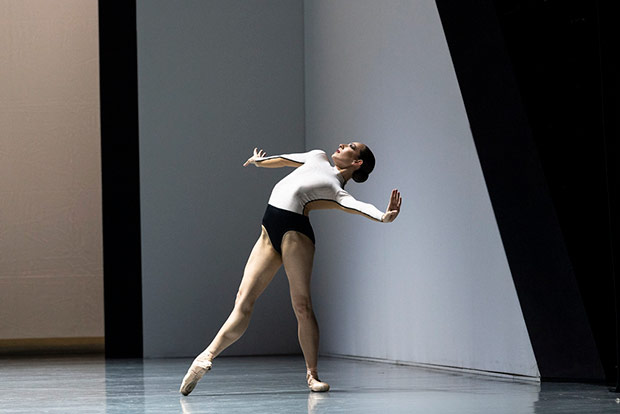
© Foteini Christofilopoulou. (Click image for larger version)
San Francisco Ballet
Programme D: Your Flesh Shall Be a Great Poem, Bound To, Anima Animus
★★★★✰
London, Sadler’s Wells
6 June 2019
Gallery of pictures by Foteini Christofilopoulou
www.sfballet.org
www.sadlerswells.com
The last of San Francisco Ballet’s triple bill premieres at Sadler’s Wells includes works from two British choreographers, Christopher Wheeldon and David Dawson, along with a piece from Trey McIntyre, a name possibly less familiar to audiences here. What a feast the whole run has been, bringing us more new short works in two weeks than we might get in two years from our own companies. You can’t expect that every item will be to your taste, but there will be delights among the wide spread on offer, and the dancers are an attractive, open hearted bunch with a real sense of cohesion as a company. The audience favourite here was David Dawson’s Anima Animus, a high energy workout danced with speed, skill and great commitment.

© Erik Tomasson. (Click image for larger version)
We began with Wheeldon’s Bound To, where he takes on our constant use of mobile phones and the social isolation it brings. It’s not a particularly new or deep insight, but he pursues it diligently. He is an experienced choreographer and his craft is clearly on display here. There is a clear structure, from the beginning with dark clad figures engrossed in their phones, not looking at each other even while being partnered, to a more idyllic carefree section recalling childhood before returning to reality, drab costumes and a single figure determinedly clutching her phone.
The music is an orchestration of songs by Keaton Henson with an added soundtrack that includes the distant sounds of children playing or birdsong. The sets are simple screens, sometimes featuring shadows of the performers, at other times projections of trees or ripples. Once the phones are disposed of, there’s an attractive section where four white clad women dance together before being joined by four men. Perhaps this might be a fantasy world that they are escaping to, or a memory of a more innocent phone-free time.

© Erik Tomasson. (Click image for larger version)
Women partner other women here for a while, a refreshing change. This is modern life, but in classical vocabulary. The women don’t wear pointe shoes but the vocabulary remains resolutely balletic. The choreography includes many motifs that may be familiar to Wheeldon-watchers – the flexed feet, and women bicycling their legs through the air when lifted. There’s a duet for Yuan Yuan Tan and Carlo di Lanno that exploits her snaking, sinuous arms and his strength and steadiness as a partner. Wheeldon has made several works for the company and they look completely at home here. Bound To is a well-made piece but not up there with his very best: it doesn’t have that sprinkle of magic that infused his Within the Golden Hour (also originally made for SFB) as performed recently by the Royal Ballet.
Do programme notes help or hinder the viewer? They tell us Trey McIntyre was thinking of his deceased grandfather while creating Your Flesh Shall Be a Great Poem. This isn’t easily apparent from the choreography itself and looking for connections you just can’t find can be frustrating – better to just experience the work in the moment.

© Foteini Christofilopoulou. (Click image for larger version)
After an enigmatic projection of a solar eclipse, we begin on a bare stage with six men, dressed in high-waisted trousers that have an old-fashioned air, elegantly goofing about. They might all be on a sports team, teasing each other before the off. It’s casual, playful, and stylishly done. The recorded music from Chris Garneau is jaunty and cheerful. About ten minutes go by before two women enter and it is faintly disappointing that they are occupied mainly in competing for the attention of one of the men. There’s a separate pas de deux for a much happier looking couple, with the woman in a more vintage-looking blue dress. It’s all very well danced but feels disjointed. The real meat of the piece comes in the closing section, a solo for Benjamin Freemantle, now stripped to his shorts and a small wooden stool, which seems to be his whole world.

© Foteini Christofilopoulou. (Click image for larger version)
McIntyre gets enormous mileage out of this as a prop. Freemantle caresses it, rolls it around, jumps on it, balances on it, and holds it over his face in an echo of the solar eclipse that we see again. In a lonely spotlight, he manages to invest the solo with a sense of heroic struggle, determined to master this little world. The image of him balanced on his stomach on the stool, as if he might be falling through space, is the one you take away from the work. It was interesting, well performed but fragmented and only intermittently involving.
Anima Animus is David Dawson’s first work for SFB. It’s a coolly chic creation, with black and white costumes and a white set rimmed with black which has something of the elegant simplicity of the designs for McGregor’s Chroma. (The set is by John Otto, costumes by Yumiko Takeshima). The work uses the depth of the stage to great effect with the woman powering forward from the far corner in great leaps like warrior goddesses. The propulsive music is Esoconcerto by Ezio Bosso, pushing the dancers on, faster, higher, stronger. There’s no narrative here, just an examination of amped-up ballet technique.

© Foteini Christofilopoulou. (Click image for larger version)
Dawson bases the work around two lead women, the imperial Sofiane Sylve, possessor of killer legs, and the feisty Wona Park. They are the queens of this world. They are lifted high, turned in the air by pairs of men who they hardly acknowledge. Some might feel that the manipulation is excessive, but the commanding Sylve is clearly nobody’s toy. The movement is more interested in legs than arms, legs that point to the ceiling, that splay and slice through the air. Everything is turned up to the max and there are genuinely thrilling moments.
The audience were ecstatic, with many standing to applaud. It is a more successfully realised piece than Dawson’s recent Human Seasons for the Royal Ballet. Yet it is unrelenting, with little light and shade. It’s all surface glossy sheen, with not so much depth. It feels that Dawson is using the dancers’ sleek athleticism and strength to pummel you into submission. I would be interested to hear what he had to say if he stopped shouting and tried to whisper now and again.
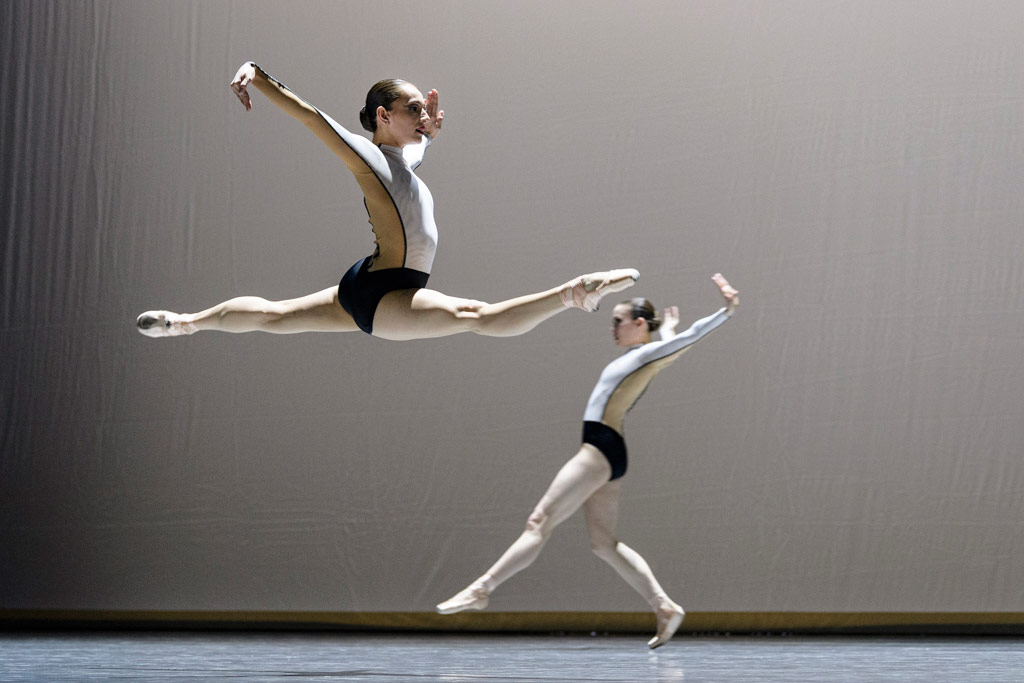
© Foteini Christofilopoulou. (Click image for larger version)
The Royal Ballet Sinfonia has been in the pit for this run, and audibly relished getting stuck into some less familiar scores, conducted by the tireless Martin West. It’s been an amazing couple of weeks. The dancers have impressed at all levels, and do come across as a real community, a coherent and cohesive group. It’s been a treat to see so much new work made specifically for a company. The dancers are free, unburdened by the weight of history and expectation, with no comparisons to be made to famous past performers or interpretations. It’s all theirs. It’s about living in the moment and revelling in it, and they have shared that enjoyment with us. Please come back soon.












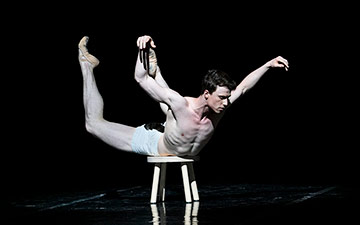
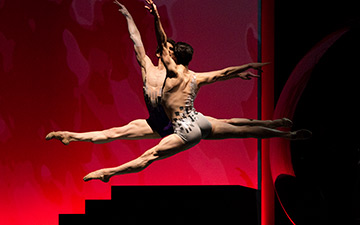
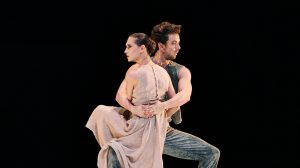


You must be logged in to post a comment.